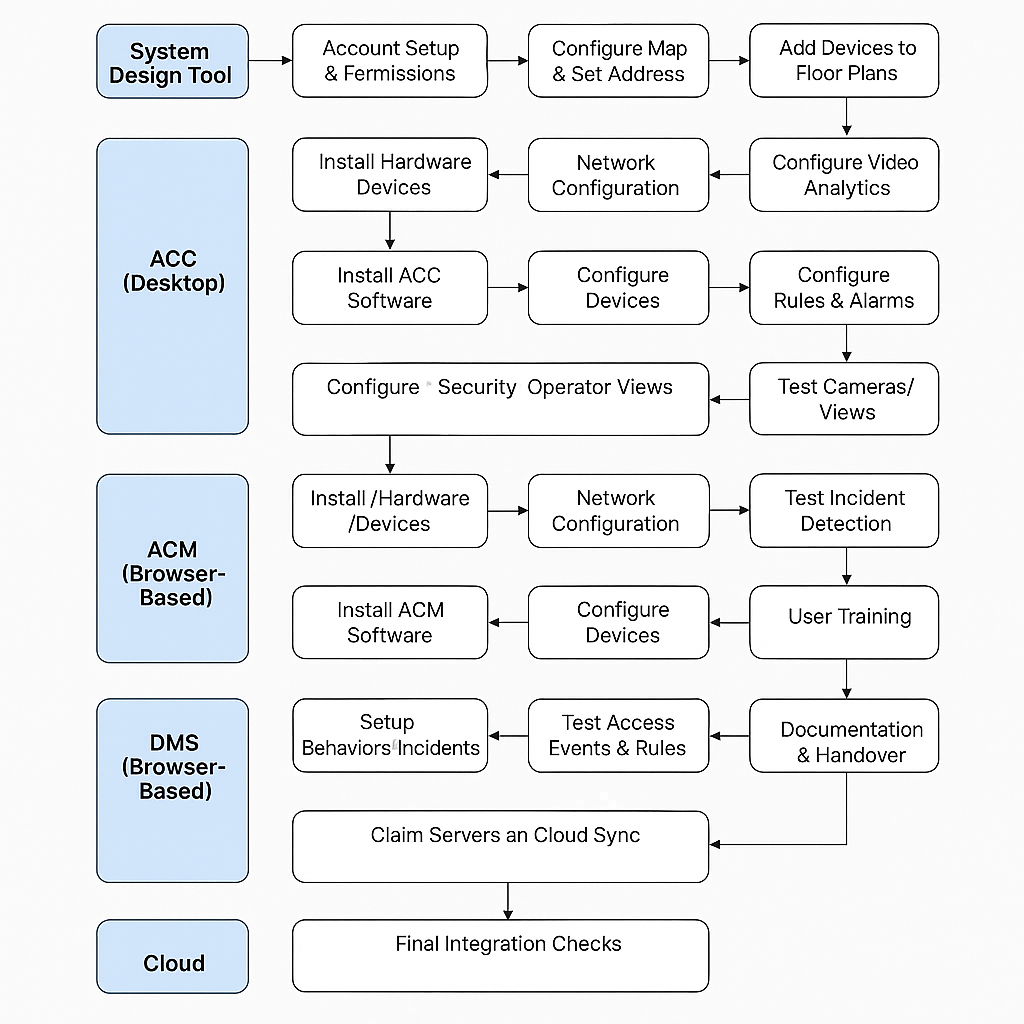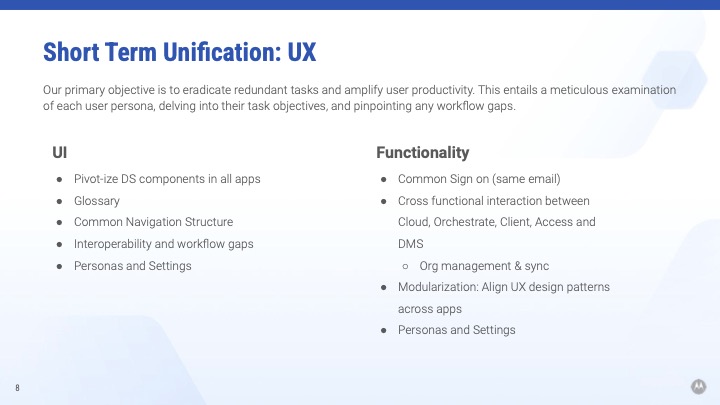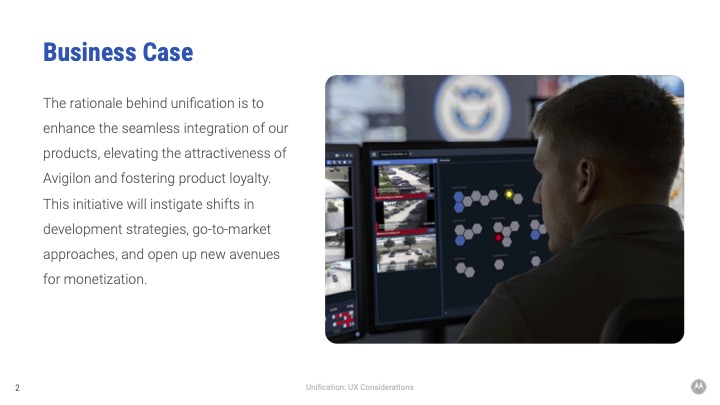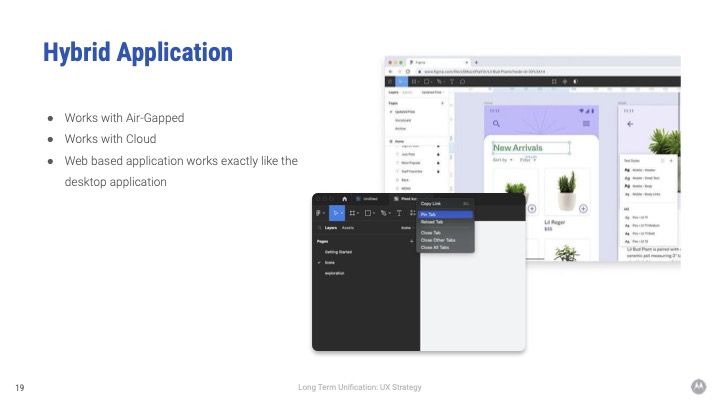Overview
Avigilon, a Motorola Solutions company, provides video management, cloud-based access control, and AI-powered analytics to streamline physical security operations. This project focused on developing a unified cloud strategy to simplify and connect workflows across our ecosystem of security tools, with a long-term vision for seamless hybrid environments.
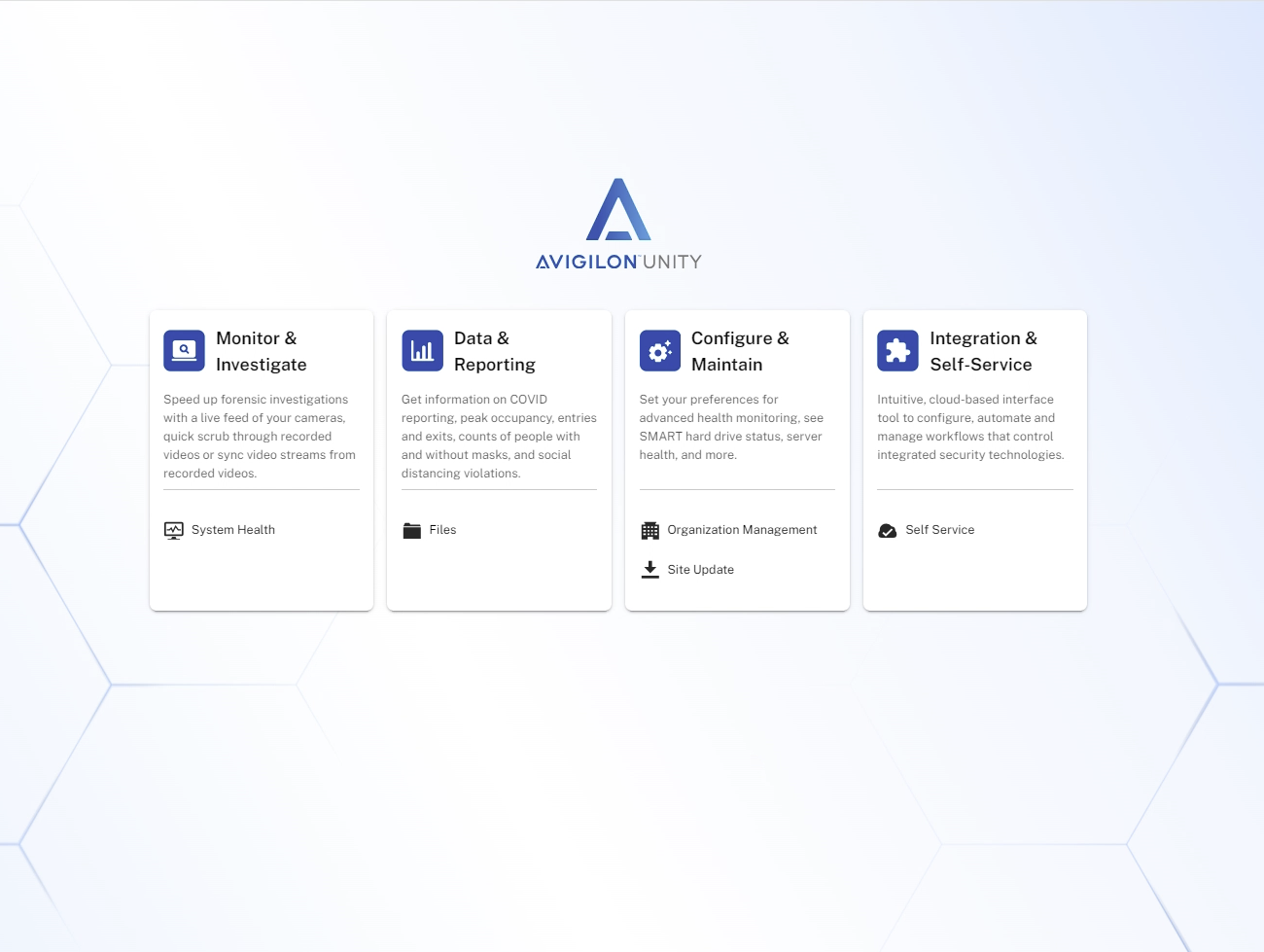 Avigilon Cloud Workspaces (solution)
Avigilon Cloud Workspaces (solution)
Problem Statement
The goal of this project was to eliminate redundant tasks and fragmented workflows across Avigilon's product suite (ACC, Access, Cloud, DMS, Orchestrate). Disconnected systems led to inconsistent experiences, missed alarms, and reduced productivity—especially in hybrid or air-gapped environments. The lack of interoperability and centralized user preferences caused frustration for integrators, security operators, and managers alike.
